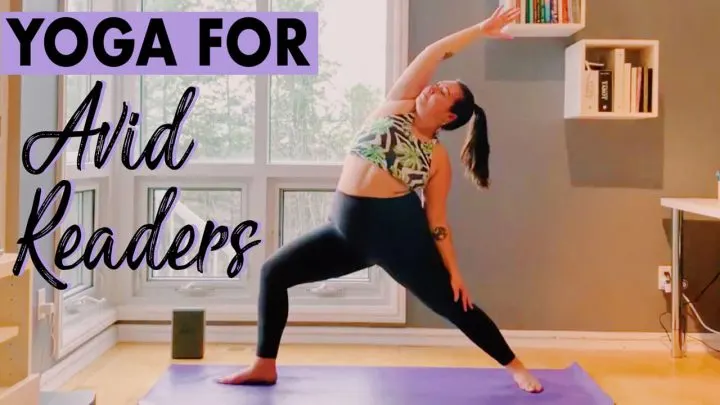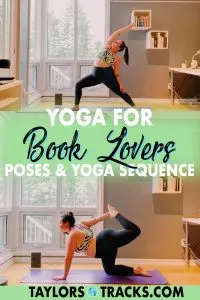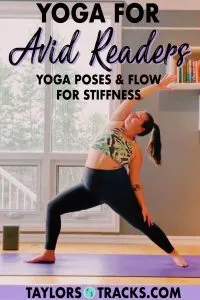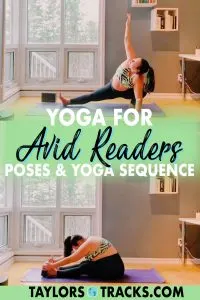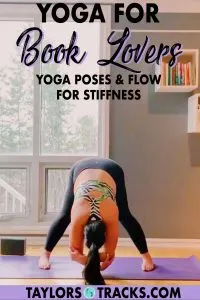Dive into these yoga poses and yoga flow to help you with overall body stiffness. Whether it’s from sitting at your desk all day, lounging on the couch, from being curled up in a ball reading a great book, or hunched over your phone (we’ve all been there, no judgment!), these poses will help you feel more open, flexible, mobile, and of course, less stiff and sore.
Can yoga help with stiffness?
Absolutely! In fact, yoga is often recommended to those with arthritis even as the practice can help relieve pain with joints and muscles. Yoga is beneficial for stiffness because of all the stretching involved in a practice. Depending on your stiffness and where it is, you may want to take a more gentle class or a class specific to the area where you feel the most pain, soreness or stiffness.
How do you overcome body stiffness?
There are a number of ways that you can overcome body stiffness and yoga is just one practice that can help. Through movement and stretching, you can help to improve circulation in your body which keeps your muscles and joints happy.
Warm baths, massages, and rest can also help with muscle stiffness.
Yoga Poses to Help with Stiffness
In a hurry? Try doing one or some of these yoga poses to help relieve body stiffness and to feel more open.
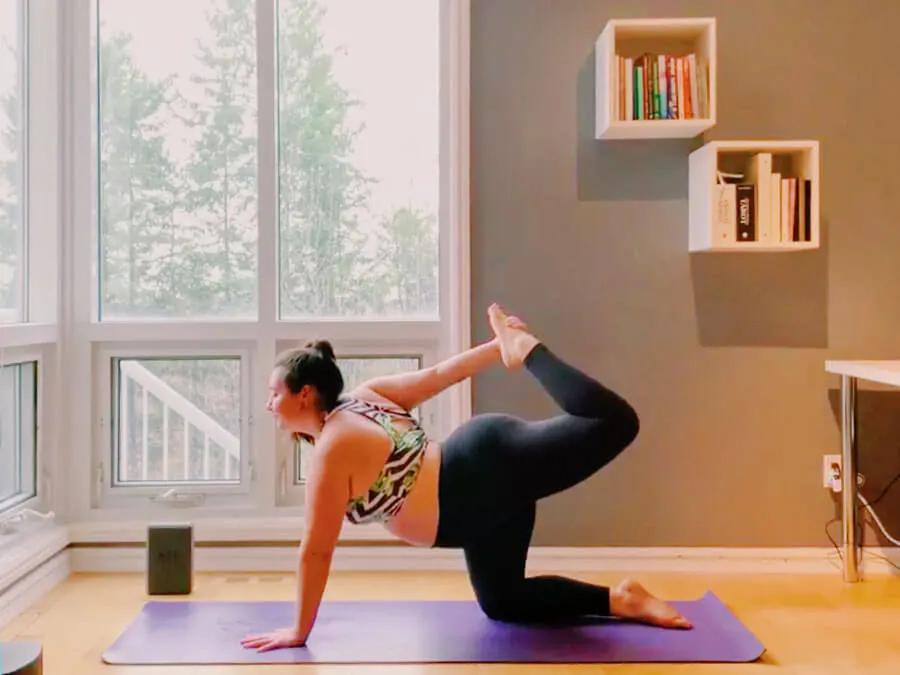
Balancing Table Yoga Pose (Dandayamana Bharmanasana)
A great way to lengthen and stretch your spine, this balancing table yoga pose uses your core to really help wake you up and keep you limber.
Begin on your hands and knees with your shoulders stacked over your wrists and your hips over your knees. Pull your belly button to your spine to engage your core so that your back is in a neutral (flat) position. Extend your right foot back, toes curled under. Lift your foot off of the ground and point or flex your foot, whatever feels good to you. Have your leg extended straight out so that it’s in line with your back as best you can.
Keeping your head straight, looking at the mat, extend your left arm forward so that your bicep is right by your ear. Push firmly into the mat with your right hand, left knee, and the top of your left foot. Inhale to reach to left hand and right foot in opposite directions and feel your spine elongate. Exhale, allow yourself to ground, and become sturdy. Keep your spine neutral.
If this feels good for you today, stay here for 3-5 breaths and then repeat on the other side.
Variations: If you wish to go further and add in some movement, extend your arm and leg on each inhale, and on each exhale bring your knee to touch your elbow under your chest as your curl your spine. Repeat 3-5 times.
For a chest opener, reach back with your left hand and grab your inner right foot. Kick your foot into your hand and up as you allow your head to look forward (pictured above). Hold for 3-5 breaths. Repeat on the opposite side.
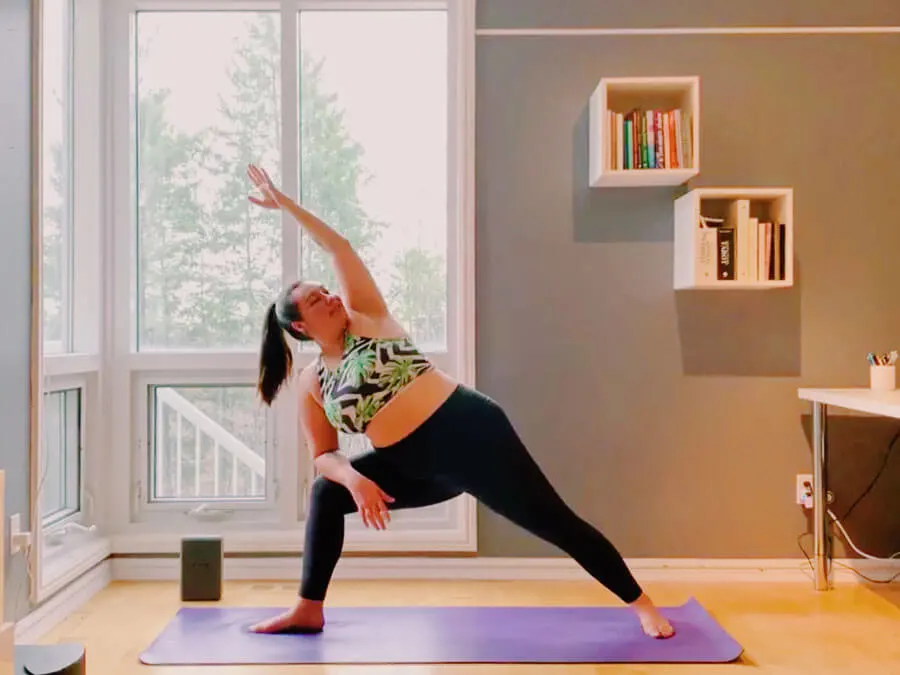
Extended Side Angle Pose (Utthita Parsvakonasana)
Get deep into your sides by expanding your entire side body with extended side angle pose.
From downward dog, bring your right foot between your hands. Keeping your right knee bent, place your back left foot so that it’s parallel with the back of your back, the arch of your left foot in line with the heel of your front right foot. Windmill your arms up so that they reach in opposite directions towards the front and back of your mat, your shoulders stacked over your hips.
Even out your hips so that one isn’t higher than the other. Have your entire upper body face the left-hand side of your mat, except your head, which looks straight out over your right fingertips. This is warrior II pose.
From warrior II, keep your legs exactly as they are. Lower your upper body to the right so that your right forearm lands on your right thigh. Use your core to hold you here so that your forearm is just slightly resting. Extend your left arm over your head, pointing your fingers to where the wall and the ceiling meet.
Open your chest by pulling your left shoulder back and moving your shoulders away from your ears. Aim to have the edge of your back foot create one long line all the way to the tips of your left fingertips. Look straight ahead or towards the ceiling.
Hold for 3-5 breaths. Repeat on the other side.
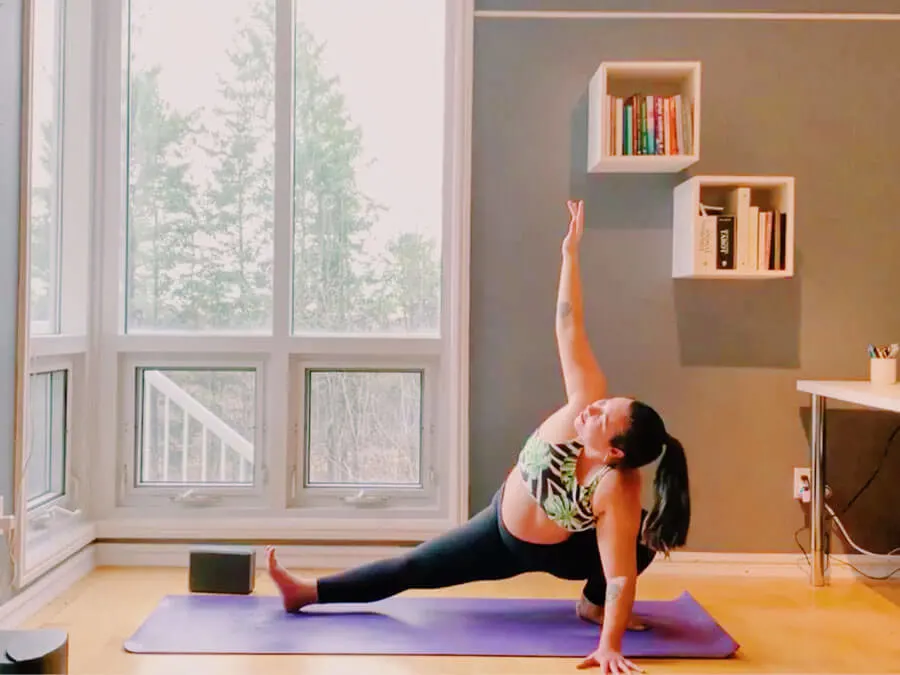
Skater Pose (Skandasana)
Skater is great for opening your hips and hamstrings but can be a tough pose for many, so if you can’t get into the deepest variation, as shown above, read through for other, less intense variations.
Face the side of your mat with your legs spread extra wide, toes pointed out. Lean your body forward and bring your hands to the mat. Bend into your right knee, not letting yourself go all the way down, walking your hands to the right with you. Then walk your hands to the left as you straighten your right leg and bend into your left. Continue to do this, walking from side to side to warm up your hamstrings, allowing yourself to go deeper if you can.
Eventually, come to settle on your right, keeping your right heel on the mat and allowing your bum to drop, but not touch the ground. Flex your left foot so that it’s just your heel on the ground, your left leg totally straight.
If your right heel comes off of the ground when you allow your bum to drop, stay where it’s possible for your heel to stay on the ground and breath into the position there.
If your bum is dropped, place your right hand on the mat in front of your right foot and extend your left hand to the ceiling, opening your chest as your gaze follows your hand.
Hold for 3-5 breaths and then repeat on the other side.
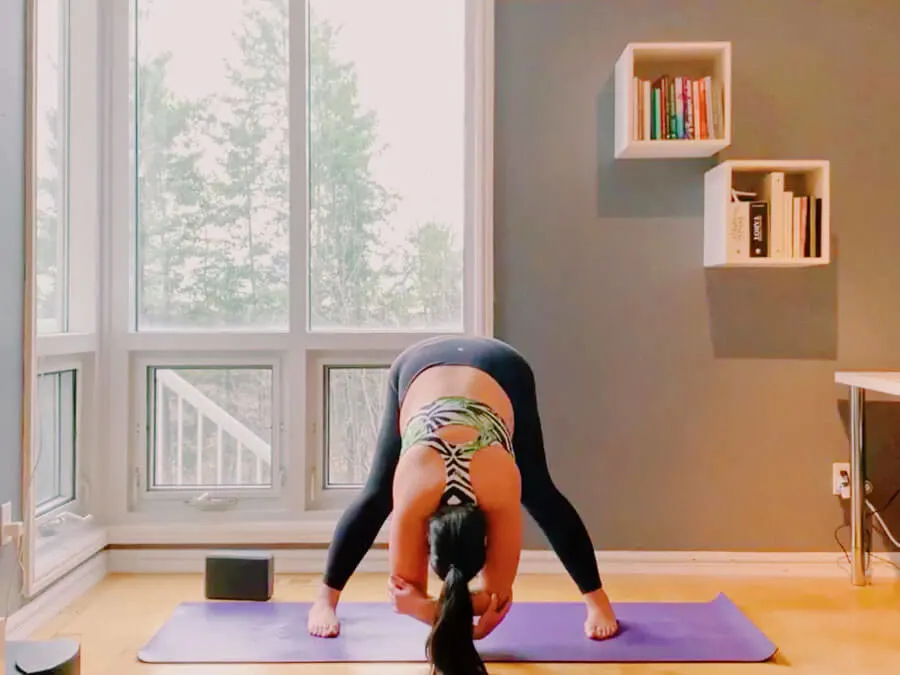
Wide-Legged Standing Forward Fold Pose (Prasarita Padottanasana)
This variation of wide-legged standing forward fold pose allows your back to fully let go and delivers a juicy feeling so that your spine can fully extend.
Stand facing the side of your mat in a wide stance with your toes pointed slightly inward. Fold forward from your waist and place your hands on the mat. Have a slight micro bend in your knees and feel your sit bones widen as your tilt your pelvic bone forward. Push evenly into both feet.
Allow your upper body to hang and grab opposite elbows with opposite hands. Stay here in stillness or allow yourself to rock back and forth to release any tension or stiffness in your lower back.
If your elbows touch the ground, walk your feet in slightly in until you can hang. If hanging feels like too much on your back, keep your hands on the ground for support.
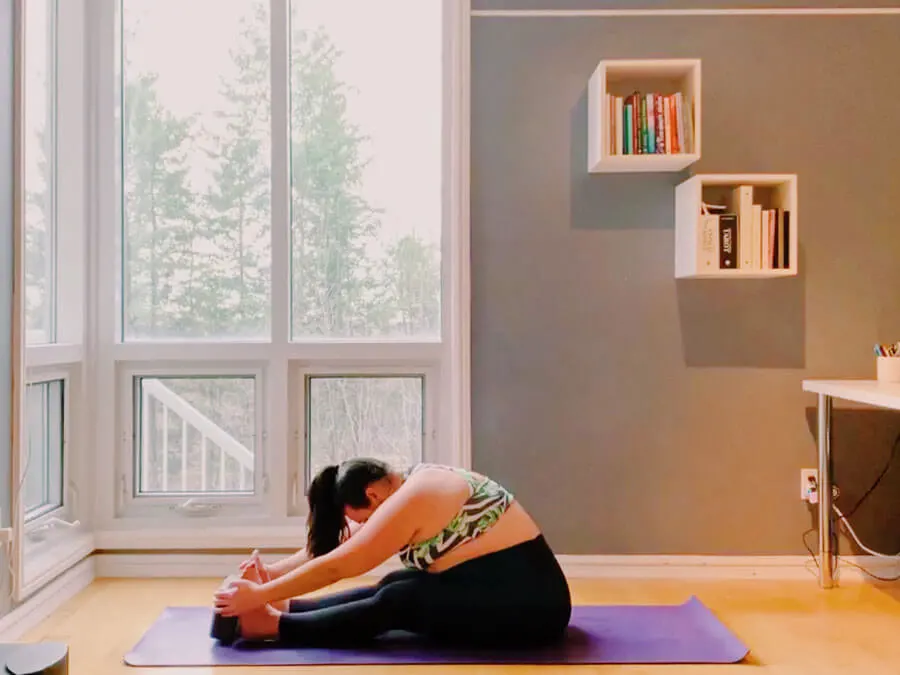
Seated Forward Fold Pose (Paschimottanasana)
An awesome stretch for your legs overall and your back, seated forward fold pose is especially ideal for stretching your lower back muscles and hamstrings.
Sit on your bum on the mat and extend your legs out straight in front of you. Flex your feet and keep a micro bend in your knees. Inhale, reach your arms up, extending them straight up to the ceiling. Feel your spine lengthen as you sit as tall as you can. Exhale, keeping your spine straight, fold forward. Reach your arms to your shins, ankles, or the outside of your feet.
Inhale, feel your spine lengthen again, exhale, fold a little deeper. Repeat once more and then allow your spine to curl forward, your forehead dropping towards your legs. Hold for an additional 3-5 breaths before walking your hands back up your legs slowly.
Variations: If you have long arms or are flexible, place a yoga block or book at your feet, and hold onto the block or book to allow for extra extension.
For a restorative variation, fold over a bolster or pillow.
Yoga for Stiffness Flow
While this yoga flow is designed for readers, it really benefits anyone who sits for long periods of time or is hunched over frequently, which let’s be real, is all of us! With the amount of time that people spend looking at their phones, computers, or even reading a great book, this yoga practice will help you to relieve stiffness by opening up your body, specifically your hips, chest, and hamstrings.
Grab your mat, hop into something comfy, and join me in this juicy yoga for stiffness flow!
Want more yoga flows? Subscribe on YouTube and hit that notification bell to know when new yoga videos come out!
Recommended Yoga Props & Gear
While these props aren’t necessary for this yoga practice, they can assist you through your flow and make some poses more accessible or deeper. These are all the exact props that I use in my own personal practice and which I recommend.

